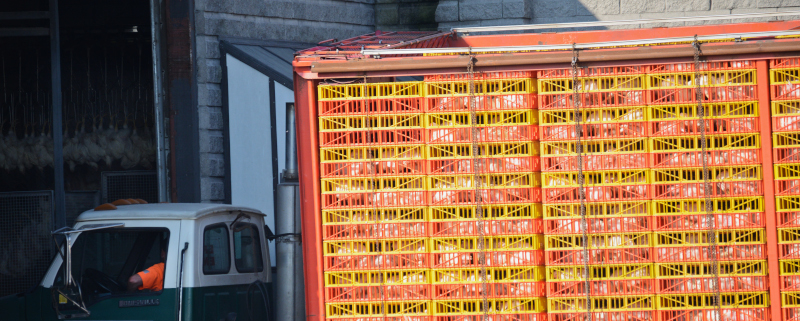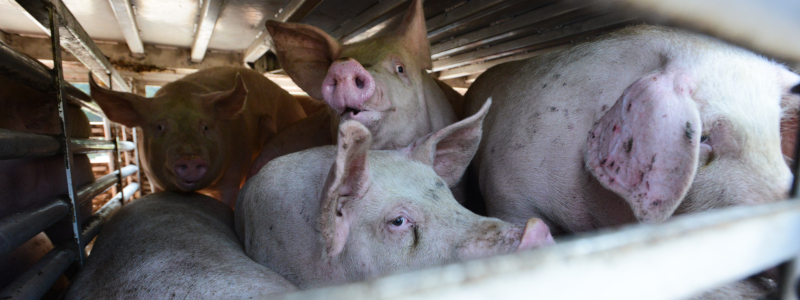Canada updated its transport regulations for farm animals in February 2019. The Canadian Coalition for Farm Animals is disappointed that the government has bowed to industry pressures at the expense of animal welfare. Like the previous regulations, from 1977, farm animals will continue to be transported for extended periods of time in all weather conditions.
Visit Political Realities for more information.
Farm animals are transported every day on Canadian highways, and virtually all are transported at least once during their lifetime. Animals are subject to freezing, dehydration, heat, trampling and disease in outdated vehicles.
More than 770 million animals are transported annually in Canada. About 1.6 million of them arrive dead at the slaughterhouse every year.
-Humane Canada

Transported animals suffer Canada’s bitterly cold winters and sizzling summers in trailers without cooling, ventilation, on-board water, or elevators to assist animals with steep inclines. Pigs are vulnerable to extreme temperatures since they're unable to sweat in the heat and have no coat to protect them in the winter. Chickens, particularly spent hens, are often missing feathers, leaving them susceptible to the cold. The European Union requires vehicle amenities for journeys longer than 8 hours.
See pictures of animals being transported to slaughter.
View our film comparing humans' vehicles to animal transport trucks
The Canadian Food Inspection Agency (CFIA), the federal agency responsible for animal transport, provides infrequent highway inspections and enforcement of transport regulations. Combined with long journeys without water, food or rest, the outcome is too often animal suffering and death.
